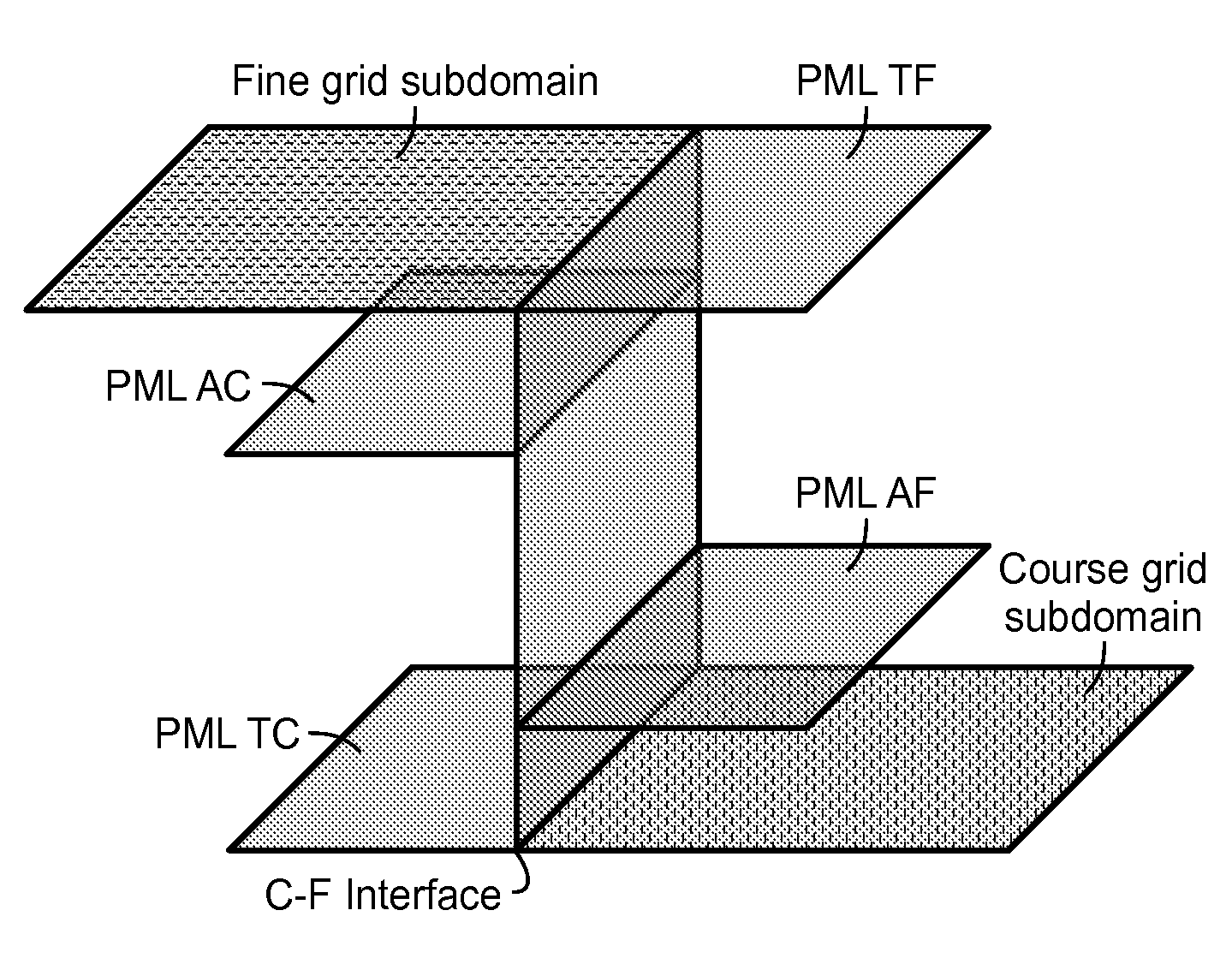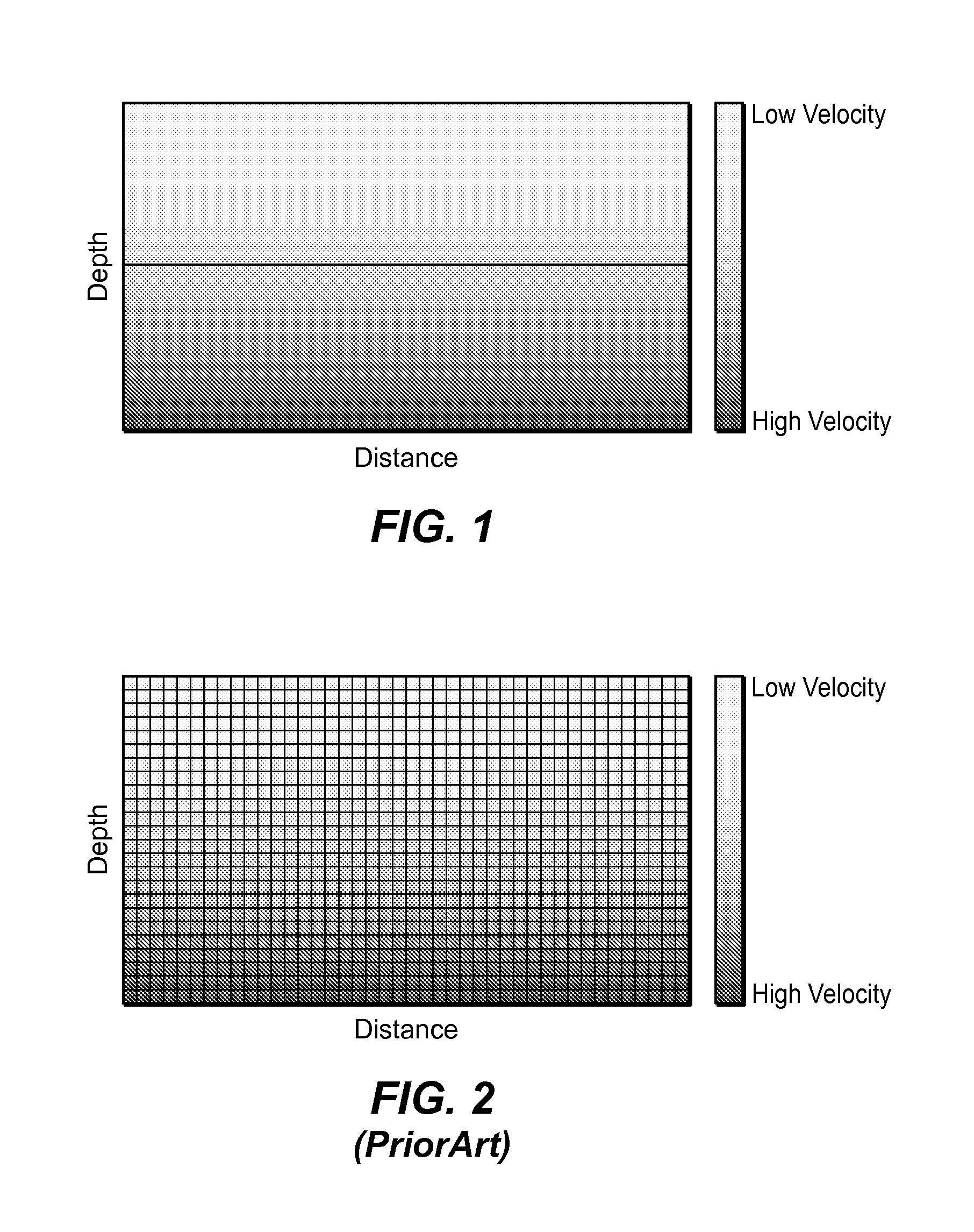Full Waveform Inversion Using Perfectly Reflectionless Subgridding
a technology of reflectionless subgridding and full waveform inversion, which is applied in the field of geophysical prospecting, can solve the problems of significant computational expense saving, and achieve the effect of improving the efficiency of full waveform inversion and significant computational expense saving
- Summary
- Abstract
- Description
- Claims
- Application Information
AI Technical Summary
Benefits of technology
Problems solved by technology
Method used
Image
Examples
examples
[0064]In this section, numerical examples are presented to show that the perfectly reflectionless subgridding FDTD method gives accurate solutions while being immune to artificial reflections and late time instability problems, which leads to a significantly more efficient full waveform inversion without sacrificing the quality of reconstructed velocity models or other geophysical property models.
[0065]The seismic velocity model and the parameter setting for the first example of subgridding FDTD simulation are shown in FIG. 11A. The velocity model consists of a homogeneous background velocity of 5000 m / s and an embedded reflector with the velocity of 5500 m / s located between the depth of 1050 m and the depth of 1200 m. First, a standard FDTD simulation is performed with a uniform grid size of 5 m and the snapshot of the pressure field p in the upper subdomain at time of about 0.32 s is shown in FIG. 11B, which may be used as the reference solution. (Using a fine grid throughout requ...
PUM
 Login to View More
Login to View More Abstract
Description
Claims
Application Information
 Login to View More
Login to View More - R&D
- Intellectual Property
- Life Sciences
- Materials
- Tech Scout
- Unparalleled Data Quality
- Higher Quality Content
- 60% Fewer Hallucinations
Browse by: Latest US Patents, China's latest patents, Technical Efficacy Thesaurus, Application Domain, Technology Topic, Popular Technical Reports.
© 2025 PatSnap. All rights reserved.Legal|Privacy policy|Modern Slavery Act Transparency Statement|Sitemap|About US| Contact US: help@patsnap.com



